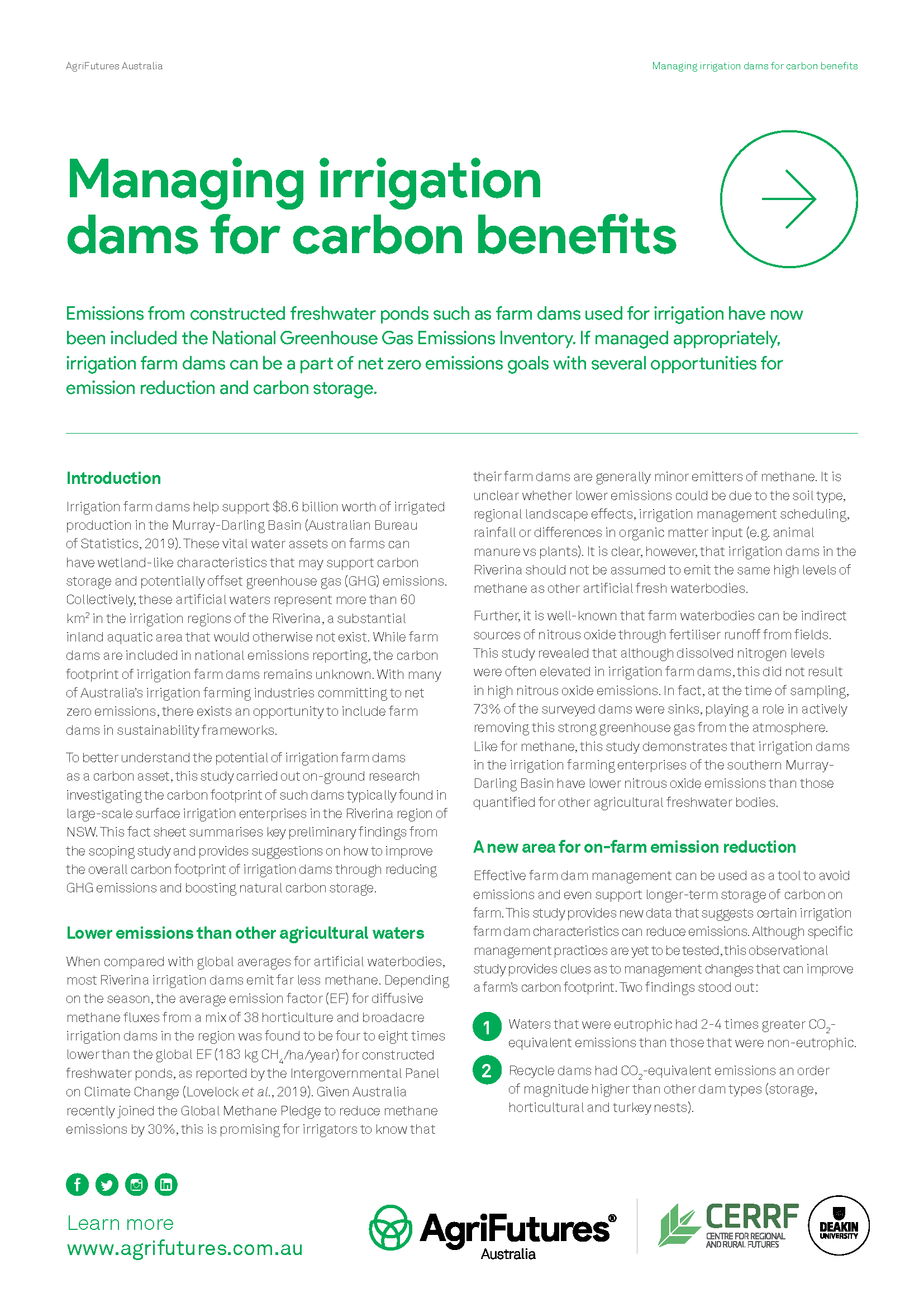Irrigation farm dams help support $8.6 billion worth of irrigated production in the Murray-Darling Basin. These vital water assets on farms can have wetland-like characteristics that may support carbon storage and potentially offset greenhouse gas (GHG) emissions. Collectively, these artificial waters represent more than 60 km2 in the irrigation regions of the Riverina, a substantial inland aquatic area that would otherwise not exist. While farm dams are included in national emissions reporting, the carbon footprint of irrigation farm dams remains unknown. With many of Australia’s irrigation farming industries committing to net zero emissions, there exists an opportunity to include farm dams in sustainability frameworks.
To better understand the potential of irrigation farm dams as a carbon asset, this study carried out on-ground research investigating the carbon footprint of such dams typically found in large-scale surface irrigation enterprises in the Riverina region of NSW. This fact sheet summarises key preliminary findings from the scoping study and provides suggestions on how to improve the overall carbon footprint of irrigation dams through reducing GHG emissions and boosting natural carbon storage.





